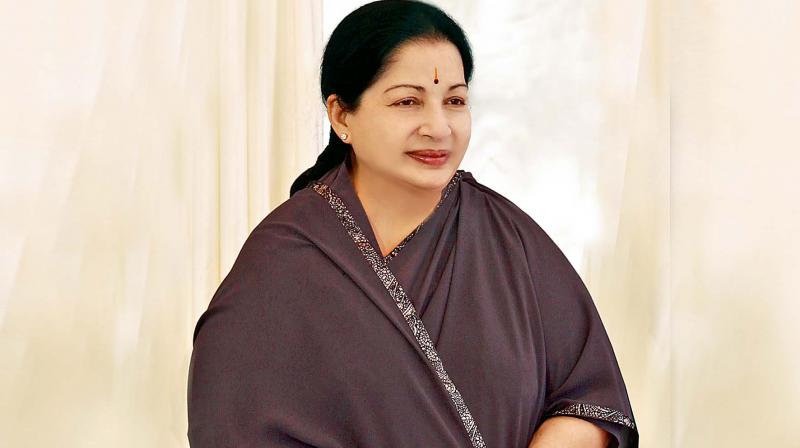Empress Jayalalithaa was in same mould as Raja Raja Chola

The Supreme Court ruled that J. Jayalalithaa will not be declared a convict in the disproportionate assets case. The decision should help clear the confusion over whether her photographs can remain in government offices, etc. Given the depth of reasoning on which the same judges had declared her confidante guilty, it must be understood that the charges abated only because Jaya had died before the final verdict was pronounced. It is unlikely that the dismissal of Karnataka’s review plea and a part exoneration of Jaya were decreed on sentimental grounds. This is a practical judgment that must hold good in all cases.
One of consequences of this will be the perpetuation of a personality cult even after death, but that is not something even top court judges can do anything about. Already, the extent to which her followers can take this was made apparent in a toy coffin with her figurine on top being made part of the campaign for the tainted RK Nagar bypoll.
While such an event symbolises all that is distasteful in blind hero worship, the issue is how far have standards been allowed to slip in this naked lust for power, So flushed with funds is the poll for a single seat that the per capita income of Tamil Nadu will be up several thousand rupees if the wealth of politicians and political parties are factored in.
There are probably a few politicians in the country who are not owners of disproportionate assets although even the super honest ones could still be scouting for money for their parties rather than themselves. Behind all this wealth is the story of why the power to rule is so sought after. Given the estimates, ruling For St George must be the most valuable job in the world, which is what Jaya did in her personalised style more in keeping with an empress than an elected representative. To her credit, it must be said that she ran her party in the same manner regardless of whether she was in power or not.
Historians have already concluded that Jayalithaa’s regime was a throwback to a regime of a thousand years ago in Tamil Nadu when Raja Raja Chola ruled from Thanjavur.
In a millennium no one had come close to replicating this Chola king’s dominance. And he didn’t even have a palace to live in and operate from. He stayed in the Big Temple that he built and which still stands as a timeless symbol of grandeur and architectural marvel in the league of the Pyramids. Some features of the temple are astonishing even as its very existence is a ‘rhapsody to size’, a symbol of all that was grand and good about those ancient times.
Arulmolivarman, better known to the world as Raja Raja Chola I and who named the big temple after himself — Rajarajeshwara temple — the most acquisitive of the Chola emperors who ruled for close to 400 years and ran one of the most sophisticated cultures. He was one emperor who dominated the near seas and had a predatory navy capable of extending his rule to nearby lands even as an army of as many as nine lakh soldiers pillaged other kingdoms, including Anuradhapura in Lanka. The history of pacifist Indian kingdoms was turned on its head by the ambit of Raja Raja Chola’s ambition.
Raja Raja Chola “created an equivalence between cosmos, temple and territory’ according to Professor R. Champakalakshmi, quoted in Sunil Khilnani’s thoroughly engaging ‘Incarnations — history of India in 50 lives’. A great patron of the arts, he was also a boon giver who was to be matched within 1,000 years of his death in 1014 by none other than Jayalaithaa, the harbinger of goodies and freebies to the public and the restorer of an unmatched personality cult as ‘Amma’ in modern India.
The number of people who were willing to give up their lives at the many crisis points created in her life by disproportionate assets makes her a modern phenomenon in the class of an emperor like Raja Raja Chola, who was fortunate that in his day and age he did not have to answer to a Prevention of Corruption Act. Khilnani writes of one poster which said it all - ‘Can a mortal punish God?’ Well, mortal judges punished her at various times, and finally with death abating rather than absolving her of the charge of personal aggrandisement on a scale only size of the imposing Big Temple could exemplify. The everlasting granite of the Brihadeeswarar temple stands as a counterpoint to the mortality of humans, be they emperors or empresses.

